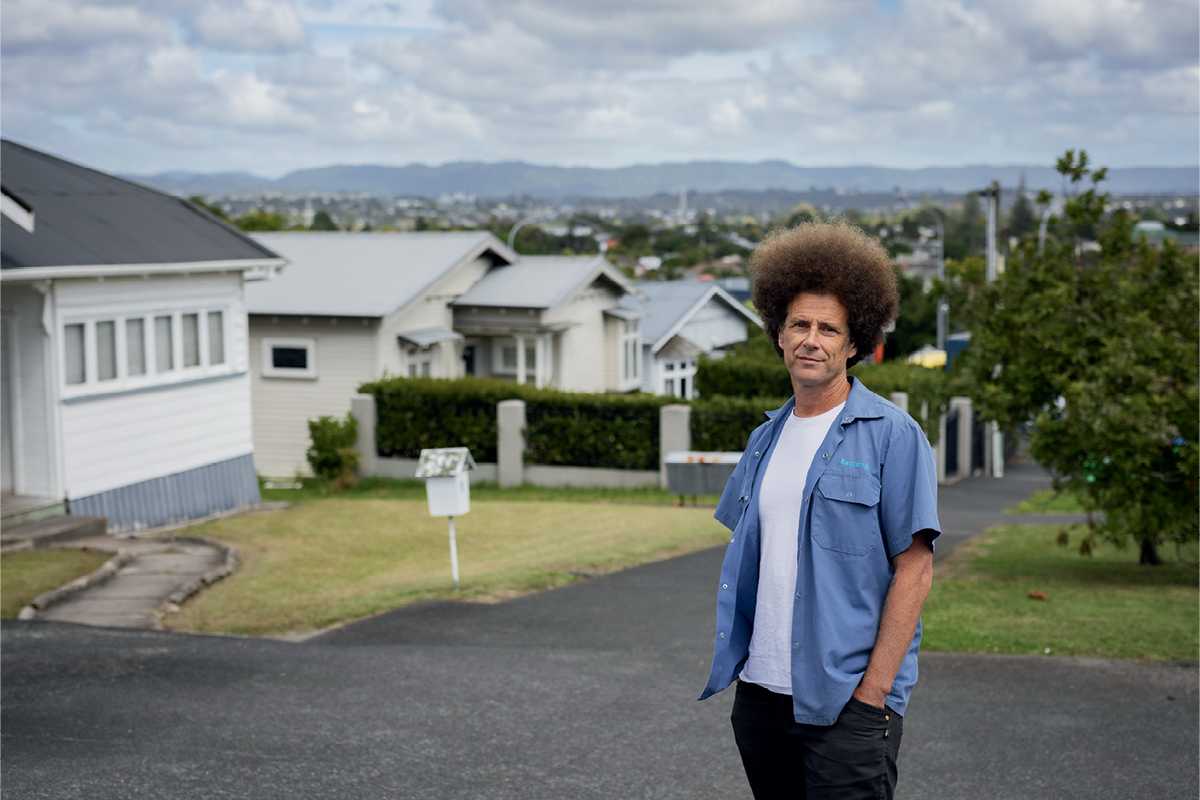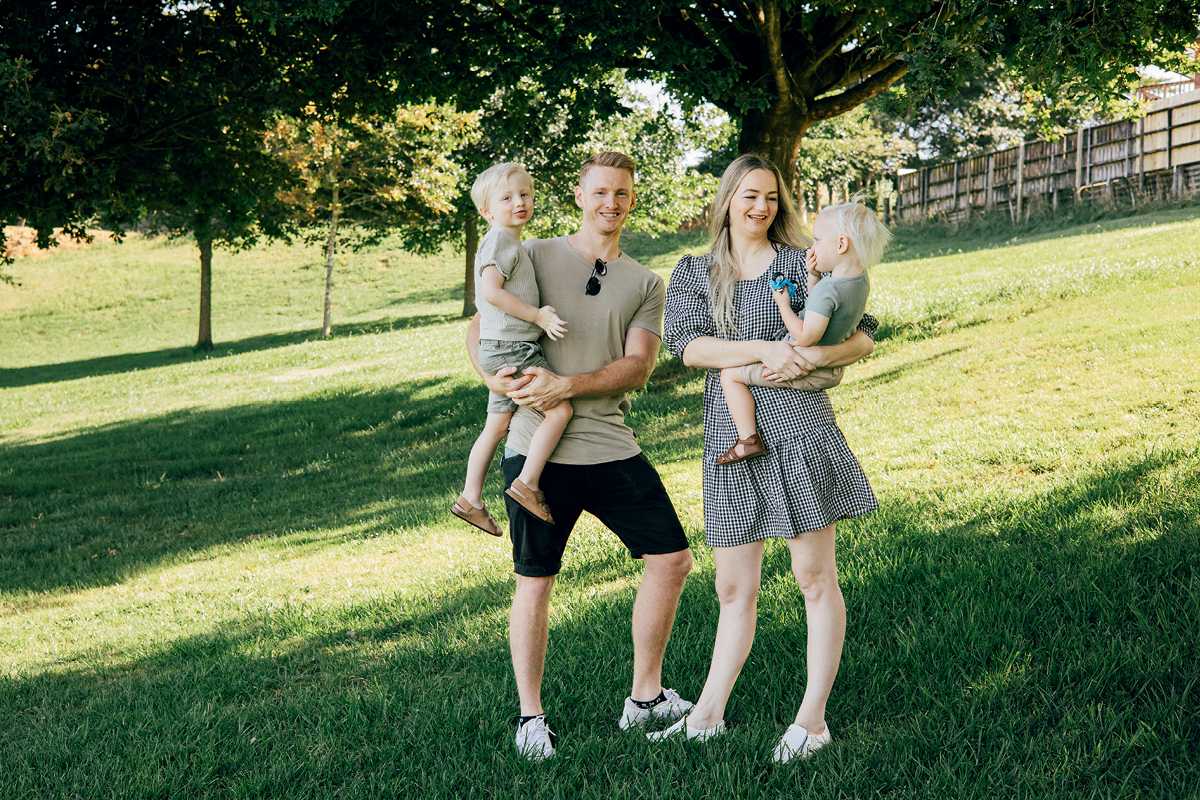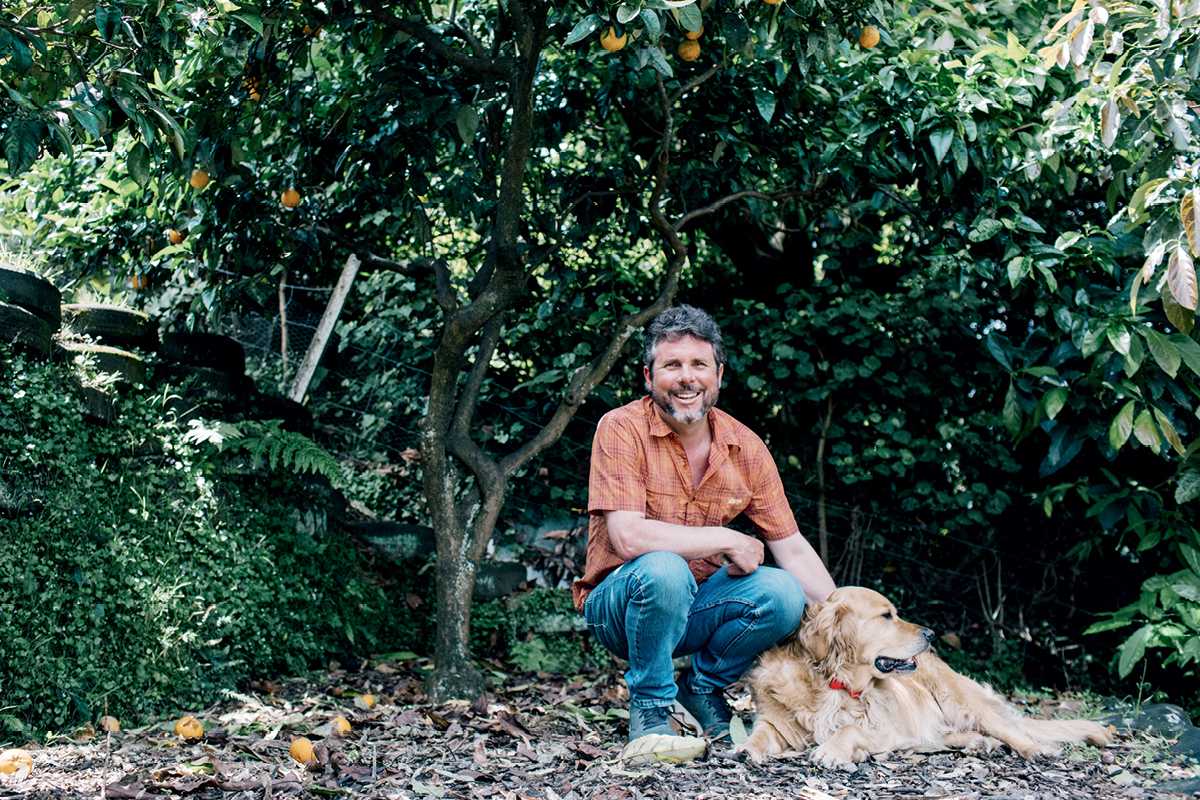
Made To Trade
Experienced investor Nick Irons shares how he worked his way up to becoming a prolific trader in his hometown, Invercargill. By Joanna Jefferies. Photography by Brogan Campbell.
30 April 2019
When Nick Irons takes on a project, he wants results, and fast. Whether that’s wheeling and dealing car parts or investing in property, he’s not one to sit around waiting patiently for his money to come in. That’s why a buy-andhold strategy was never going to work for him.
The Invercargill born-and-raised investor trained as a joiner following school, but he says he was always entrepreneurial, and a money-maker on the side, either dealing in car parts or building materials. When he was 23, together with his then girlfriend (now wife) Selena Irons, he purchased five rental properties.
Two years later and the properties had appreciated enough to pay for the real estate agent’s fee, should they choose to sell them. Irons was frustrated.
During that time, the couple had bought a large character home for $85,000 that had been damaged by fire, which they lived in and renovated over a period of 18 months. They sold it for $187,000, and for the first time Irons could see how his practical skills could be put to better use buying and renovating properties for profit.
“I realised very quickly that I could do one trade and make what I would make in five years of owning a rental.”
The First Trade
The five rental properties were sold, one of them on a rent-to-buy scheme. The new owner of that property paid a 10% deposit to Irons and also renovated the house while Irons still owned it, thereby increasing its value, which meant he had enough equity to purchase his first trade.
A suitable Invercargill property was located for $42,000, and the twobedroom home was renovated at a cost of $23,000 over a five month period. It was sold for $113,000, but while the bank balance looked good, the cost to Irons was steep, as he’d renovated it entirely himself outside of work hours.
He had learnt his lesson, and decided to employ more contractors to help with subsequent trades “to speed the process up and keep my sanity a bit more”. But far and above reducing his hours, having more hands on deck meant he could turn houses around more quickly.
What followed was a period of six years working full-time in his day job, while trading between three and six houses each year, outside of work hours. “I’d leave home at six in the morning, get home at six at night and still spend two or three hours at night on houses, and then Saturdays and Sundays,” says Irons.
‘My goal was to be mortgage free by the time I was 55. I made it well and truly in that time – it was a very surreal feeling to know that I’d done that all myself’ NICK IRONS

During that period, Irons purchased a buy-and-hold, for its excellent yield. It was a big old house and he renovated it into a two-bedroom flat and a seven-bedroom rent-by-room. He was pulling in $60,000 a year, minus expenses of around $16,000 and for a moment he considered chucking in his job to live on a passive income, at just shy of 30 years of age.
But Irons knew he would be stuck and wouldn’t have the cashflow to expand his portfolio further. And there’s nothing Irons hates more than not having the ability to control his destiny. The hold was sold and Irons was back to scheming about how he could afford to leave his day job.
The reason why he couldn’t trade full-time without it was simple: Lack of cashflow. He earned around $50,000 per year as a joiner, and the profit from each trade was used to fund the next one.
But finally, after six years, Irons had enough cash behind him and a cunning plan to leave full-time employment. In his typical style, it wasn’t a traditional one: He had bought a wood chipper, which he says brings in a week’s worth of wages in just one day.
His company H and F Chipping was formed, allowing Irons to work just one day a week, while trading for the rest of the week.
A New Direction
The chipper, however, barely got a film of sawdust on it before Irons was fielding calls from all over Invercargill, asking him to renovate homes, or do trades on behalf of others.
“Over the years you develop quite a few relationships with people and I’d start to get, ‘Can you come round and do this?’” Never one to pass up a new opportunity, he began his wheeling and dealing in property. But he wasn’t interested in doing the work himself, and H and F Chipping quickly became a company whose activities are unrelated to its name.
In just one year, Irons has built the business into a 25-strong team, employing full-time roofers, tilers, builders, plumbers, electricians and more. It was astronomical growth, but it wasn’t because Irons was pushing it. “The work was the easiest thing in the world to get, it just kept coming. We went from trading $40,000 per month to $250,000 per month.”
He currently does about five renovation projects per year for clients, which allows him the cashflow to do six of his own trades each year. It was a natural progression then, for Irons to offer clients what you could call “property finding services”, which has the added benefit that Irons can choose the projects he most wants to work on. “Because I’ve been dealing in Invercargill for so long, I can normally get my hands on things that other people don’t see. I pick up private trades that never see the market.
Invercargill only has 45,000 people so it’s not exactly huge. Most real estate agents have been round for 25 years and they find me easy to deal with.” Irons typically charges an upfront fee for the deal, but he’s always exploring other avenues. Initially he was offering joint ventures, whereby the client would provide the finance, and he would do all the renovation work, for a 50/50 split of the profit.

Nick Irons’ Top Trading Tips
1 “The best money is always made buying one thing and selling another”. That means if you buy a three-bedroom house, you’ll make far more if you sell a four bedroom
house.
2 When pricing for renos: “If you go and get the cheapest price for everything, it doesn’t necessarily reflect upon the quality of what you achieve at the end of it. I try and work on $1 in, $2 out”.
3 Prioritise what you put money into: “I’ve seen people spend $3,000 or $4,000 on curtains for a house in a trade – and it may be a $200,000 house – because that’s what they want for themselves. But if you go to Briscoes you can get curtains for $900 that will do an ample job. On the other hand if you get the cheapest, ugliest curtains you can get your hands on, they have no value”.
4 Amp up your saleability – this can actually increase your value. For Irons that means he always adds something extra to increase the attraction of his product. This could be as simple as a red front door, or upgraded appliances in the kitchen.
5 But “you don’t want to set trends in your neighbourhood either”. What Irons means is bringing a trade up to what you consider “perfect” will mean you have over-capitalised and the buyer will never value every single choice you’ve made, therefore you could have saved money. “You want to do the perfect job all the time, but it’s not the best thing to do.”
6 Understand the cost of renovation: “If you’re building it’s generally 50% labour 50% materials, but if you’re doing a renovation it’s one third materials and two thirds labour”.
7 “If something isn’t working learn to accept it and walk away as fast as you can.”
But the market has soared so much, the profit margins are no longer there – “For a house to be any good for a JV you need to make $70,000 or $80,000 at the end of the project to make it worthwhile”.
The trades he does for clients now bring in around $25,000 – $30,000 per deal, “that’s what the expected mark is”.
His latest new strategy is a fixed price return deal, whereby clients lend him their money through a mortgage document (many of his clients would prefer not to become traders themselves) and he offers a fixed price return of 7% per annum, for example.
With the money, he’ll purchase a trade, renovate it and sell it, pay out the 7% on completion and pocket the extra profit. Because most trades only take up to six months, his client then has the option of going again and doubling their money.
Looking Ahead
Unlike many of his fellow investors, Irons laughs at the idea of taking a holiday. Right now, he’s immersed in growing his trading and renovations company and believes he will need to employ 10 more staff members by the end of 2019. “Sometimes you wake up and you think, ‘Why the hell am I doing this to myself?’ But generally if it’s too easy, then you’re not doing it right, if it’s too easy then everyone would be doing it.”
The rapid growth of the company means there will be many small issues to iron out over the year, as well as the need to keep strategising for making the most out of the market.
Selena is currently at home looking after their two boys, aged 18 months and four years old, and Irons laughs that she “tolerates” his ambitious endeavours in property.
As if he didn’t have enough on his plate, Irons will soon open a kitchen and bathroom showroom, which will mean all the tradies on his books will have any free time between property trades filled in with installing kitchens and bathrooms.
It’s a classic example of Irons’ “wheeling and dealing” mentality, and it has never failed him yet. In all of his entrepreneurial ventures, Irons has only ever lost $1,100 on one deal where the cost of holding a house ran over the projected timeline. But true to form, Irons cut his losses and moved, rapidly, on to the next deal.


